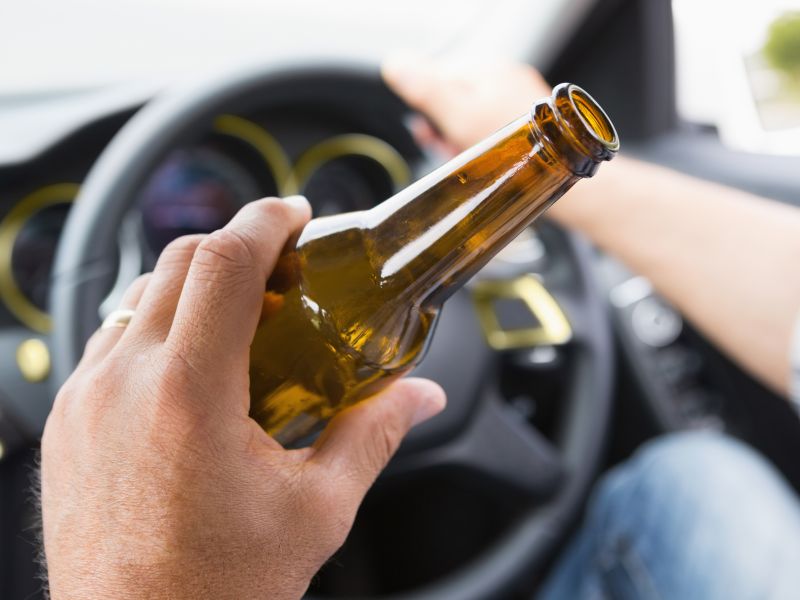
— DUI
Can You Get A DWI If You Are Under The Legal Limit?
Virginia residents enjoying a social occasion may feel tempted to drink a small amount of alcohol before driving home from the event, thinking that their limited consumption is unlikely to do any harm. Before they realize their coordination and reflexes may be impaired, these motorists may find themselves in an unexpected encounter with Virginia law enforcement, answering questions and being asked to perform field sobriety tests. Many drivers are unaware of how little alcohol it takes to result in significant impairment, and as a result may end up facing allegations of driving while intoxicated (DWI) despite consuming only a small amount of alcohol. Can a motorist face aDWI charge while under the legal limit? Perhaps the most effective way to answer this question is to speak to an experienced Virginia traffic attorney with Driving Defense Law. Consider calling (757) 929-0335 for a free consultation to discuss your legal options.
What Is a DWI in Virginia?
In Virginia, as in most other states, DWI means driving while intoxicated. This is essentially the same as driving under the influence (DUI) or driving while under the influence of marijuana, drugs, or other intoxicants (DUID). The main difference is that while a DUI or DUID charge can apply to driving under the influence of alcohol or drugs, a DWI charge is related to alcohol. Specifically, DWI charges apply when the driver has a blood alcohol content (BAC) of 0.08% or higher.
While the definition of “intoxicated” is usually based on BAC, Virginia residents and visitors may be surprised to discover that the definition of “driving” varies from state to state. The Code of Virginia actually makes it illegal, under § 18.2-266, to drive “or operate” a motor vehicle while intoxicated. The Supreme Court of Virginia has generally interpreted the “or operate” language to include any situation in which the person charged has physical control of the vehicle. Therefore, individuals can still be charged with DWI or DUI in Virginia if they are sitting behind the wheel with the key in the ignition, even if they are sleeping or listening to the radio with no intention of moving the vehicle.
Can a Driver Be Impaired While Under the Legal Limit?
The Virginia Department of Motor Vehicles states that the legal limit for drivers over the age of 21 is 0.08%, and a driver of legal drinking age whose BAC is 0.08% or higher is presumed to be driving under the influence. Drivers under 21 with a BAC of 0.02-0.08% can be convicted with no other evidence, in keeping with the spirit of § 4.1 Va. Stat., which makes it unlawful for individuals under 21 to consume alcohol at all under most circumstances. Generally speaking, a person who is legally permitted to purchase and consume alcohol can remain under the legal limit after drinking a small amount. That being said, even one or two drinks can have the ability to impair a driver.
A driver struggles to divide their attention between two or more visual stimuli at a BAC of 0.02% or lower, according to a 1999 study in the Journal of Alcohol Research & Health hosted by the National Library of Medicine. When BAC reaches 0.05%, eye movement, visual perception, reaction time, glare resistance, information processing, and various other functions necessary for safe driving can become impaired. If they reach a degree of impairment sufficient to justify probable cause for a traffic stop, a driver can face DWI charges even while under the legal limit.
How Many Drinks Is .08 for a Woman?
Men and women absorb and metabolize alcohol differently. This sexual difference is attributable to a number of biological factors, with average size featuring among the most prominent. An important implication of this metabolic difference is that women, on average, are likely to experience greater degrees of intoxication-related impairment than men after consuming similar amounts of alcohol.
Women
In addition to having a lower average body mass overall than men, women generally have smaller amounts of water in their systems to dilute the alcohol entering their bodies with each drink. Increasing the sexual disparity, women also typically have lower levels of active alcohol-metabolizing enzyme alcohol dehydrogenase (ADH) in their stomachs. As a result, more of the alcohol women drink reaches their bloodstream, according to the National Institute of Alcohol Abuse and Alcoholism. The combination of these factors means that women generally reach a BAC of 0.08% after at least four drinks in approximately two hours.
Men
Men have larger livers and, on average, more body mass than women, which lets them absorb and metabolize alcohol with greater ease. As a result, it generally takes men more alcohol to reach the same BAC as a woman enjoying the same number of beverages. Men tend to reach a BAC of 0.08% after at least five drinks within two hours.
Other Factors That Impact Blood Alcohol Content Level
While body water, enzymes, liver size, and body mass all affect BAC, many other factors also play a role. Some of these factors include:
- The strength of the drink (two drinks made with half a shot each will have the same impact as one drink with one full shot, for example)
- Drinking pace
- Food consumption (consuming alcohol with food may slow a drink’s absorption into the bloodstream)
- Age
- Proportion of body mass that is fatty tissue
- Genetics
If you have questions about how these factors may affect your DWI case, knowledgeable attorneys with Driving Defense Law may be able to assist you.
How Can You Be Charged With DWI if Your BAC Is Under the Legal Limit?
A DWI or DUI charge typically begins with a traffic stop. Law enforcement may pull a driver over if they notice possible indications of drinking and driving, such as:
- Jerky or abrupt stops
- Weaving across lane lines
- Swerving
- Hitting or nearly hitting another vehicle or object
- Drifting
- Turning with a wide radius
- Parking too far from the curb or at an odd angle
After initiating a traffic stop on suspicion of DWI, officers look for other indicators of intoxication. These may include:
- Slurred speech
- Difficulty getting out of the vehicle
- Difficulty operating the vehicle controls (struggling to put the car in park or pull the key from the ignition, for example)
- Fumbling for their license or registration
- Repeating questions or answers or extremely slow responses
- Unsteady and swaying posture, difficulty maintaining balance, leaning against the vehicle or other objects
- An odor of alcohol emanating from the driver or vehicle
If the officer notices any of these indications, they may administer a breath test. Drivers have the right to refuse a breath test in the field, but an officer who suspects DWI may then place the driver under arrest, activating Virginia’s implied consent laws. In the event that a driver is arrested for DUI, the arresting officer will document the details of the interaction and any signs of impairment the driver displayed during the traffic stop in their official report, which the prosecution may then use in building the DWI case.
What Is the Lowest Level of DWI?
The penalties for a DUI conviction depend, in part, on the accused’s record of prior offenses. First and second offenses are usually misdemeanors, while third and subsequent offenses are felonies. However, a driver can be charged with a felony DWI for a first offense if they seriously injure or kill someone. As long as the prosecution can prove the defendant was impaired, the felony DWI charge may lead to a conviction even if the driver’s BAC was under the legal limit.
In addition to the consequences listed below, the defendant in a DWI case must attend Alcohol Safety Action Program (ASAP) classes. They may also be subject to the installation of ignition interlock devices on their vehicles, face suspended or revoked licenses, and incur points on their driving records.
Misdemeanor
First and second offenses are Class 1 misdemeanors. For a first conviction, a driver faces a minimum $250 fine, in addition to which a BAC between 0.15% and 0.19% will trigger a mandatory minimum 5-day jail sentence. A BAC above 0.20% leads to a mandatory minimum jail sentence of 10 days.
For second offenses that occur less than five years from the first, the driver will face a minimum $500 fine and 20 days in jail in addition to the minimum jail time from the first offense related to their BAC. Second offenses that occur five to ten years from the first offense also trigger minimum $500 fines, but with 10-day jail sentences.
Felony
DWI charges become Class 6 felonies for third and subsequent offenses. If the third offense is within five to ten years of the first, the driver faces a minimum $1,000 fine and 90 days in jail –plus applicable jail times from the first offense. Third offenses that are less than five years from the first also lead to minimum fines of $1,000 – but with six months in jail plus applicable jail times from the first offense. A fourth offense less than ten years from the first comes with a minimum $1,000 fine and one year in jail, plus applicable jail sentences for the first offense(s).
Have You Been Charged With Driving While Intoxicated?
Explaining the circumstances of a DWI to criminal courts in Virginia can be intimidating, regardless of the BAC level involved. Legal representation allows defendants to approach this challenge with confidence and efficiency. An experienced traffic attorney may be able to develop defense strategies that increase the chances of dismissal, or improve the chances of reduced penalties. Those charged with driving under the influence may consider contacting Driving Defense Law at (757) 929-0335. Reach out today to schedule a free consultation to discuss your legal options and learn more about DWI under the legal limit in Virginia.

